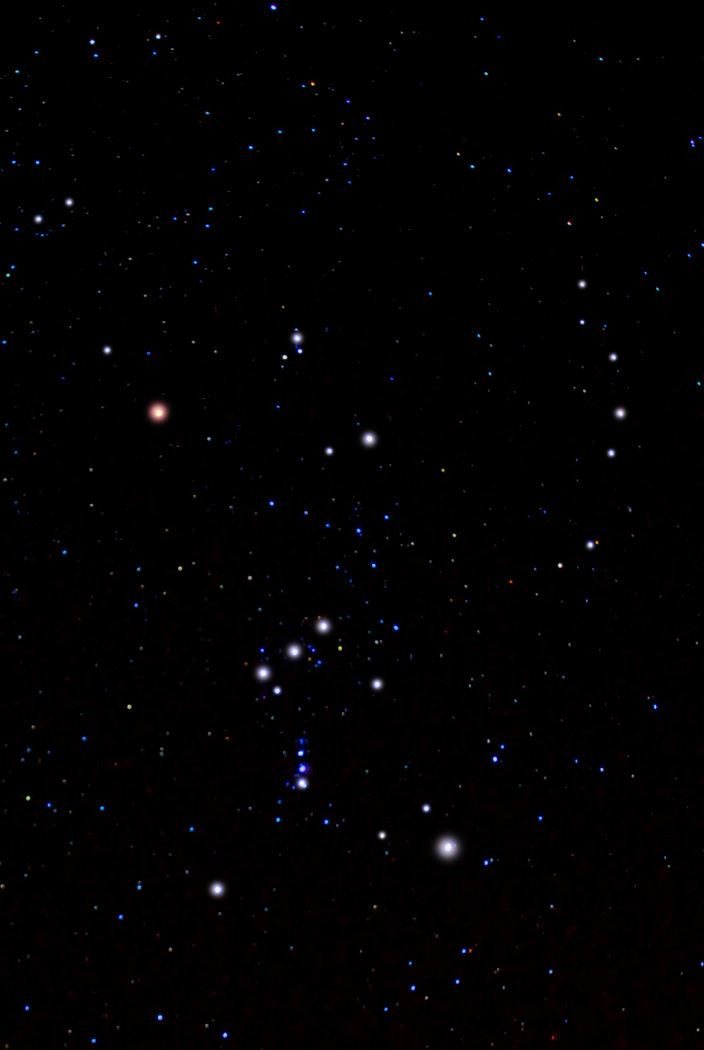Orion
Orion is perhaps the second-best known constellation in the sky, next to the Big Dipper. Certainly it is the best known group of stars in winter. It is also host to a number of very interesting objects. First of all, the star Betelgeuse is a red super-giant in its last phase of life. With a physical size almost 1000 times that of our sun, if Betelgeuse were placed in the center of our solar system, it would extend outward to between Mars and Jupiter. A massive star, Betelgeuse is more than 100,000 times as bright as the sun and is only dimmed by its great distance of about 600 light years. This star is fusing its various elements in its core at a ferocious pace and is due to go supernova soon, perhaps in the next millenium. When that happens, Betelgeuse will shine brighter than the full moon for several months while it collapses into a neutron star. The other bright star in Orion, Rigel, is a blue-white giant of type B and is even further from Earth, lying about 800 light years distant. Rigel is about as massive as Betelgeuse, between 15 and 20 times the mass of our sun but is still fusing hydrogen in its core and thus has not yet begun to bloat up into a red giant. A moderately sized amateur telescope reveals Rigel to be double but spectroscopic studies have revealed that the companion star is itself a binary, making the system a ternary. One of the most famous nebulae in the heavens is found in Orion, M42, a huge hydrogen cloud which is collapsing and birthing new stars. At a distance of about 1500 light years, M42 is still bright enough to be glimpsed with the naked eye under ideal conditions. About 700 stars have been observed in the nebula in various stages of formation and about 150 protoplanetary disks have been photographed by the Hubble Space Telescope. M42 is just one part of a vast complex of gas and dust which extends throughout Orion and even beyond its borders.
 |